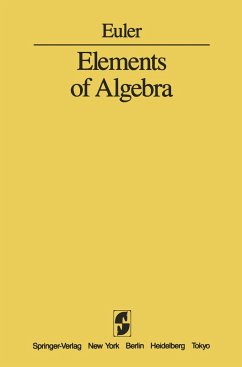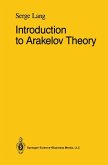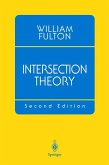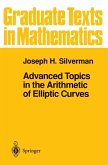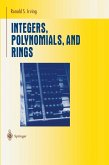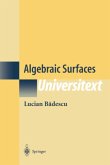"This is a facsimile reprint of John Hewlett's 1840 translation of Euler's Algebra and Lagrange's Additions thereto. Most of Euler's contribution is elementary, nothing more advanced than solving quartic equations, but worth having in order to appreciate his leisurely and effective style---would that more great mathematicians wrote so well and to such pedagogic effect. However, one third of the book is his lucid treatment of questions in number theory, and it is this material that drew Lagrange's comments. Here for the first time are the rigorous treatments of continued fractions and
"Pell's" equation, and of quadratic forms. The combination of Euler's and Lagrange's tests, of experimental and theoretical research in Weil's description, is justly celebrated by the editors of Euler's Opera omnia, who print the two together, and it is good to see this classic back in print in English. Every library without much Euler should at least have this volume. It is accompanied by an excerpt of Horner's memoir on the life of Euler, and a eulogy by Truesdell, with a useful bibliography." -- MATHEMATICAL REVIEWS
I. Containing the Analysis of Determinate Quantities.- Section I. Of the Different Methods of calculating Simple Quantities.- Chap. I. Of Mathematics in general.- II. Explanation of the signs + plus and ¿ minus.- III. Of the Multiplication of Simple Quantities.- IV. Of the Nature of whole Numbers, or Integers, with respect to their Factors.- V. Of the Division of Simple Quantities.- VI. Of the Properties of Integers, with respect to their Divisors.- VII. Of Fractions in general.- VIII. Of the Properties of Fractions.- IX. Of the Addition and Subtraction of Fractions.- X. Of the Multiplication and Division of Fractions.- XI. Of Square Numbers.- XII. Of Square Roots, and of Irrational Numbers resulting from them.- XIII. Of Impossible, or Imaginary Quantities, which arise from the same source.- XIV. Of Cubic Numbers.- XV. Of Cube Roots, and of Irrational Numbers resulting from them.- XVI. Of Powers in general.- XVII. Of the Calculation of Powers.- XVIII. Of Roots, with relation to Powers in general.- XIX. Of the Method of representing Irrational Numbers by Fractional Exponents.- XX. Of the different Methods of Calculation, and of their Mutual Connexion.- XXI. Of Logarithms in general.- XXII. Of the Logarithmic Tables now in use.- XXIII. Of the Method of expressing Logarithms.- Section II. Of the different Methods of calculating Compound Quantities.- Chap. 1. Of the Addition of Compound Quantities.- II. Of the Subtraction of Compound Quantities.- III. Of the Multiplication of Compound Quantities.- IV. Of the Division of Compound Quantities.- V. Of the Resolution of Fractions into Infinite Series.- VI. Of the Squares of Compound Quantities.- Chap. VII. Of the Extraction of Roots applied to Compound Quantities.- VIII. Of the Calculation of Irrational Quantities.- IX. Of Cubes, and of the Extraction of Cube Roots.- X. Of the higher Powers of Compound Quantities.- XI. Of the Transposition of the Letters, on which the demonstration of the preceding Rule is founded.- XII. Of the Expression of Irrational Powers by Infinite Series.- XIII. Of the Resolution of Negative Powers.- Section III. Of Ratios and Proportions.- Chap. I. Of Arithmetical Ratio, or of the Difference between two Numbers.- II. Of Arithmetical Proportion.- III. Of Arithmetical Progressions.- IV. Of the Summation of Arithmetical Progressions.- V. Of Figurate, or Polygonal Numbers.- VI. Of Geometrical Ratio.- VII. Of the greatest Common Divisor of two given Numbers.- VIII. Of Geometrical Proportions.- IX. Observations on the Rules of Proportion and their Utility.- X. Of Compound Relations.- XI. Of Geometrical Progressions.- XII. Of Infinite Decimal Fractions.- XIII. Of the Calculation of Interest.- Section IV. Of Algebraic Equations, and of the Resolution of those Equations.- Chap. I Of the Solution of Problems in General.- II. Of the Resolution of Simple Equations, or Equations of the First Degree.- III. Of the Solution of Questions relating to the preceding Chapter.- IV. Of the Resolution of two or more Equations of the First Degree.- V. Of the Resolution of Pure Quadratic Equations.- VI. Of the Resolution of Mixed Equations of the Second Degree.- VII. Of the Extraction of the Roots of Polygonal Numbers.- VIII. Of the Extraction of Square Roots of Binomials.- Chap. IX. Of the Nature of Equations of the Second Degree.- X. Of Pure Equations of the Third Degree.- XI. Of the Resolution of Complete Equations of the Third Degree.- XII. Of the Rule of Cardan, or of Scipio Ferreo.- XIII. Of the Resolution of Equations of the Fourth Degree.- XIV. Of the Rule of Bombelli for reducing the Resolution of Equations of the Fourth Degree to that of Equations of the Third Degree.- XV. Of a new Method of resolving Equations of the Fourth Degree.- XVI. Of the Resolution of Equations by Approximation.- II. Containing the Analysis of Indeterminate Quantities.- Chap. I. Of the Resolution of Equations of the first Degree, which contain more than one unknown Quantity.- II. Of the Rule which is called Regula C¿, for determining by means of two Equations, three or more Unknown Quantities.- III. Of Compound Indeterminate Equations, in which one of the unknown Quantities does not exceed the first Degree.- IV. Of the Method of rendering Surd Quantities of the form, ?(a + bx + cx2), Rational.- V. Of the Cases in which the Formula, a + bx + cx2, can never become a Square.- VI. Of the Cases in Integer Numbers, in which the Formula ax2 + b becomes a Square.- VII. Of a particular Method, by which the Formula, an2 + 1, becomes a Square in Integers.- VIII. Of the Method of rendering the Irrational Formula,?(a + bx + cx2 + dx3), Rational.- IX. Of the Method of rendering rational the Incommensurable Formula, ?(a + bx + cx2 + dx3 + ex4).- X. Of the Method of rendering rational the irrational Formula, $$ \sqrt[3]{{\left( {a + bx + c{x^{2}} + d{x^{3}}} \right)}} $$.- XI. Of the Resolution of the Formula, ax2 + bxy + cy2, into its Factors.- XII. Of the Transformation of the Formula, ax2 + cy2, into Squares, and higher Powers.- XIII. Of some Expressions of the Form, ax4 + by4, which are not reducible to Squares.- XIV. Solution of some Questions that belong to this Part of Algebra.- Chap. XV. Solutions of some Questions in which Cubes are required.- Additions.- Chap. I. Of Continued Fractions.- II. Solution of some Curious and New Arithmetical Problems.- III. Of the Resolution in Integer Numbers of Equations of the first Degree containing two unknown Quantities.- IV. General Method for resolving in Integer Equations of two unknown Quantities, one of which does not exceed the first Degree.- V. A direct and general Method for finding the values of z, that will render Quantities of the form, ?(a + bx + cx2), rational, and for resolving, in rational Numbers, the indeterminate Equations of the second Degree, which have two unknown Quantities, when they admit of Solutions of this kind.- Resolution of the Equation, Ap2 + Bq2 = z2, in Integer Numbers.- VI. Of Double and Triple Equalities.- VII. A direct and general Method for finding all the values of y expressed in Liteger Numbers, by which we may render Quantities of the form, ?(Ay2 + B), rational; A and B being given Integer Numbers; and also for finding all the possible Solutions, in Integer Numbers, of Indeterminate Quadratic Equations of two unknown Quantities.- Resolution of the Equation, cy2 ? 2nyz + Bz2=1, in Integer Numbers.- First Method.- Second Method.- Of the Manner of finding all the possible Solutions of the Equation, cy2 ? 2nyz + Bz2=1, when we know only one of them.- Of the Manner of finding all the possible Solutions, in whole numbers, of Indeterminate Quadratic Equations of two unknown Quantities.- VIII. Remarks on Equations of the Form, p2=Aq2 + 1, and on the common Method of resolving them in whole Numbers.- IX. Of the Manner of finding Algebraic Functions of all Degrees, which, when multiplied together, may always produce similar Functions.
"Pell's" equation, and of quadratic forms. The combination of Euler's and Lagrange's tests, of experimental and theoretical research in Weil's description, is justly celebrated by the editors of Euler's Opera omnia, who print the two together, and it is good to see this classic back in print in English. Every library without much Euler should at least have this volume. It is accompanied by an excerpt of Horner's memoir on the life of Euler, and a eulogy by Truesdell, with a useful bibliography." -- MATHEMATICAL REVIEWS
I. Containing the Analysis of Determinate Quantities.- Section I. Of the Different Methods of calculating Simple Quantities.- Chap. I. Of Mathematics in general.- II. Explanation of the signs + plus and ¿ minus.- III. Of the Multiplication of Simple Quantities.- IV. Of the Nature of whole Numbers, or Integers, with respect to their Factors.- V. Of the Division of Simple Quantities.- VI. Of the Properties of Integers, with respect to their Divisors.- VII. Of Fractions in general.- VIII. Of the Properties of Fractions.- IX. Of the Addition and Subtraction of Fractions.- X. Of the Multiplication and Division of Fractions.- XI. Of Square Numbers.- XII. Of Square Roots, and of Irrational Numbers resulting from them.- XIII. Of Impossible, or Imaginary Quantities, which arise from the same source.- XIV. Of Cubic Numbers.- XV. Of Cube Roots, and of Irrational Numbers resulting from them.- XVI. Of Powers in general.- XVII. Of the Calculation of Powers.- XVIII. Of Roots, with relation to Powers in general.- XIX. Of the Method of representing Irrational Numbers by Fractional Exponents.- XX. Of the different Methods of Calculation, and of their Mutual Connexion.- XXI. Of Logarithms in general.- XXII. Of the Logarithmic Tables now in use.- XXIII. Of the Method of expressing Logarithms.- Section II. Of the different Methods of calculating Compound Quantities.- Chap. 1. Of the Addition of Compound Quantities.- II. Of the Subtraction of Compound Quantities.- III. Of the Multiplication of Compound Quantities.- IV. Of the Division of Compound Quantities.- V. Of the Resolution of Fractions into Infinite Series.- VI. Of the Squares of Compound Quantities.- Chap. VII. Of the Extraction of Roots applied to Compound Quantities.- VIII. Of the Calculation of Irrational Quantities.- IX. Of Cubes, and of the Extraction of Cube Roots.- X. Of the higher Powers of Compound Quantities.- XI. Of the Transposition of the Letters, on which the demonstration of the preceding Rule is founded.- XII. Of the Expression of Irrational Powers by Infinite Series.- XIII. Of the Resolution of Negative Powers.- Section III. Of Ratios and Proportions.- Chap. I. Of Arithmetical Ratio, or of the Difference between two Numbers.- II. Of Arithmetical Proportion.- III. Of Arithmetical Progressions.- IV. Of the Summation of Arithmetical Progressions.- V. Of Figurate, or Polygonal Numbers.- VI. Of Geometrical Ratio.- VII. Of the greatest Common Divisor of two given Numbers.- VIII. Of Geometrical Proportions.- IX. Observations on the Rules of Proportion and their Utility.- X. Of Compound Relations.- XI. Of Geometrical Progressions.- XII. Of Infinite Decimal Fractions.- XIII. Of the Calculation of Interest.- Section IV. Of Algebraic Equations, and of the Resolution of those Equations.- Chap. I Of the Solution of Problems in General.- II. Of the Resolution of Simple Equations, or Equations of the First Degree.- III. Of the Solution of Questions relating to the preceding Chapter.- IV. Of the Resolution of two or more Equations of the First Degree.- V. Of the Resolution of Pure Quadratic Equations.- VI. Of the Resolution of Mixed Equations of the Second Degree.- VII. Of the Extraction of the Roots of Polygonal Numbers.- VIII. Of the Extraction of Square Roots of Binomials.- Chap. IX. Of the Nature of Equations of the Second Degree.- X. Of Pure Equations of the Third Degree.- XI. Of the Resolution of Complete Equations of the Third Degree.- XII. Of the Rule of Cardan, or of Scipio Ferreo.- XIII. Of the Resolution of Equations of the Fourth Degree.- XIV. Of the Rule of Bombelli for reducing the Resolution of Equations of the Fourth Degree to that of Equations of the Third Degree.- XV. Of a new Method of resolving Equations of the Fourth Degree.- XVI. Of the Resolution of Equations by Approximation.- II. Containing the Analysis of Indeterminate Quantities.- Chap. I. Of the Resolution of Equations of the first Degree, which contain more than one unknown Quantity.- II. Of the Rule which is called Regula C¿, for determining by means of two Equations, three or more Unknown Quantities.- III. Of Compound Indeterminate Equations, in which one of the unknown Quantities does not exceed the first Degree.- IV. Of the Method of rendering Surd Quantities of the form, ?(a + bx + cx2), Rational.- V. Of the Cases in which the Formula, a + bx + cx2, can never become a Square.- VI. Of the Cases in Integer Numbers, in which the Formula ax2 + b becomes a Square.- VII. Of a particular Method, by which the Formula, an2 + 1, becomes a Square in Integers.- VIII. Of the Method of rendering the Irrational Formula,?(a + bx + cx2 + dx3), Rational.- IX. Of the Method of rendering rational the Incommensurable Formula, ?(a + bx + cx2 + dx3 + ex4).- X. Of the Method of rendering rational the irrational Formula, $$ \sqrt[3]{{\left( {a + bx + c{x^{2}} + d{x^{3}}} \right)}} $$.- XI. Of the Resolution of the Formula, ax2 + bxy + cy2, into its Factors.- XII. Of the Transformation of the Formula, ax2 + cy2, into Squares, and higher Powers.- XIII. Of some Expressions of the Form, ax4 + by4, which are not reducible to Squares.- XIV. Solution of some Questions that belong to this Part of Algebra.- Chap. XV. Solutions of some Questions in which Cubes are required.- Additions.- Chap. I. Of Continued Fractions.- II. Solution of some Curious and New Arithmetical Problems.- III. Of the Resolution in Integer Numbers of Equations of the first Degree containing two unknown Quantities.- IV. General Method for resolving in Integer Equations of two unknown Quantities, one of which does not exceed the first Degree.- V. A direct and general Method for finding the values of z, that will render Quantities of the form, ?(a + bx + cx2), rational, and for resolving, in rational Numbers, the indeterminate Equations of the second Degree, which have two unknown Quantities, when they admit of Solutions of this kind.- Resolution of the Equation, Ap2 + Bq2 = z2, in Integer Numbers.- VI. Of Double and Triple Equalities.- VII. A direct and general Method for finding all the values of y expressed in Liteger Numbers, by which we may render Quantities of the form, ?(Ay2 + B), rational; A and B being given Integer Numbers; and also for finding all the possible Solutions, in Integer Numbers, of Indeterminate Quadratic Equations of two unknown Quantities.- Resolution of the Equation, cy2 ? 2nyz + Bz2=1, in Integer Numbers.- First Method.- Second Method.- Of the Manner of finding all the possible Solutions of the Equation, cy2 ? 2nyz + Bz2=1, when we know only one of them.- Of the Manner of finding all the possible Solutions, in whole numbers, of Indeterminate Quadratic Equations of two unknown Quantities.- VIII. Remarks on Equations of the Form, p2=Aq2 + 1, and on the common Method of resolving them in whole Numbers.- IX. Of the Manner of finding Algebraic Functions of all Degrees, which, when multiplied together, may always produce similar Functions.
"This is a facsimile reprint of John Hewlett's 1840 translation of Euler's Algebra and Lagrange's Additions thereto. Most of Euler's contribution is elementary, nothing more advanced than solving quartic equations, but worth having in order to appreciate his leisurely and effective style---would that more great mathematicians wrote so well and to such pedagogic effect. However, one third of the book is his lucid treatment of questions in number theory, and it is this material that drew Lagrange's comments. Here for the first time are the rigorous treatments of continued fractions and "Pell's" equation, and of quadratic forms. The combination of Euler's and Lagrange's tests, of experimental and theoretical research in Weil's description, is justly celebrated by the editors of Euler's Opera omnia, who print the two together, and it is good to see this classic back in print in English. Every library without much Euler should at least have this volume. It is accompanied by an excerptof Horner's memoir on the life of Euler, and a eulogy by Truesdell, with a useful bibliography." -- MATHEMATICAL REVIEWS

